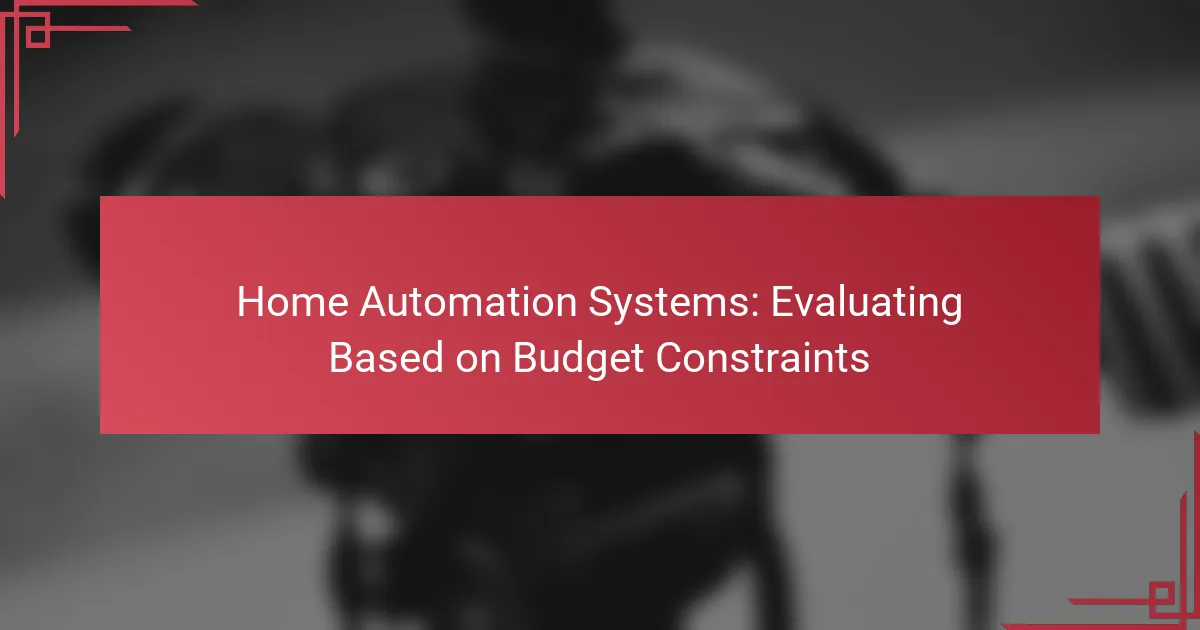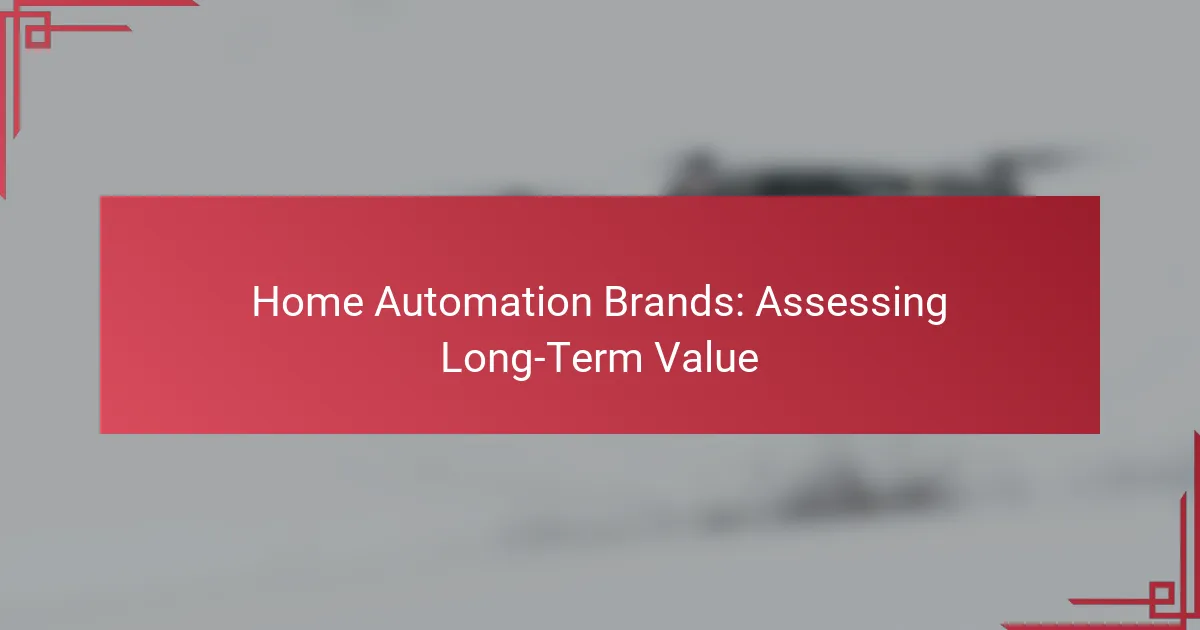Home automation systems can enhance convenience and efficiency in your daily life, but finding the right one within budget constraints is crucial. By focusing on affordability, essential features, and compatibility with existing devices, consumers in Ireland can identify cost-effective solutions like Google Nest Hub and Amazon Echo Dot. Careful evaluation of initial costs, installation fees, and any ongoing subscriptions will help ensure you choose a system that fits both your needs and your budget.

What are the best home automation systems for budget-conscious consumers in Ireland?
For budget-conscious consumers in Ireland, the best home automation systems offer affordability, ease of use, and compatibility with various devices. Options like Google Nest Hub, Amazon Echo Dot, and TP-Link Kasa provide effective solutions without breaking the bank.
Google Nest Hub
The Google Nest Hub is a versatile smart display that integrates seamlessly with various smart home devices. It allows users to control lights, thermostats, and cameras through voice commands or touch, making it user-friendly for all ages.
Pricing typically starts around €90, making it an accessible choice for those looking to enhance their home automation setup. Consider its compatibility with Google Assistant for voice control and its ability to display useful information like weather and calendar events.
Amazon Echo Dot
The Amazon Echo Dot is a compact smart speaker that serves as a central hub for controlling smart home devices. With Alexa built-in, users can easily manage their home environment through voice commands, including playing music and setting reminders.
Prices generally range from €50 to €70, depending on sales and promotions. Its small size makes it easy to place anywhere, and it works well with a wide range of compatible devices, making it a great entry point for budget-conscious consumers.
TP-Link Kasa Smart Home
TP-Link Kasa offers a variety of smart home devices, including smart plugs, bulbs, and cameras, all of which can be controlled via the Kasa app. This system is particularly appealing for those who want to start small and expand their automation setup over time.
Individual devices are typically priced between €10 and €50, making it easy to build a customized system without significant upfront investment. The Kasa app is intuitive, allowing users to create schedules and automate routines effortlessly.
Philips Hue Starter Kit
The Philips Hue Starter Kit includes smart bulbs and a bridge, enabling users to control lighting through an app or voice commands. This system is ideal for those looking to enhance their home ambiance with smart lighting solutions.
Starter kits usually cost around €80 to €100, which is a reasonable investment for high-quality smart lighting. Philips Hue bulbs are known for their color range and brightness, offering a customizable lighting experience that can significantly enhance home comfort.
Samsung SmartThings
Samsung SmartThings is a comprehensive home automation platform that connects a wide range of devices, from lights to security systems. It allows users to create automated routines and control devices through a single app.
The SmartThings Hub typically retails for about €80, and it supports numerous third-party devices, making it a flexible option for expanding your smart home. Users should ensure compatibility with existing devices to maximize the benefits of this system.
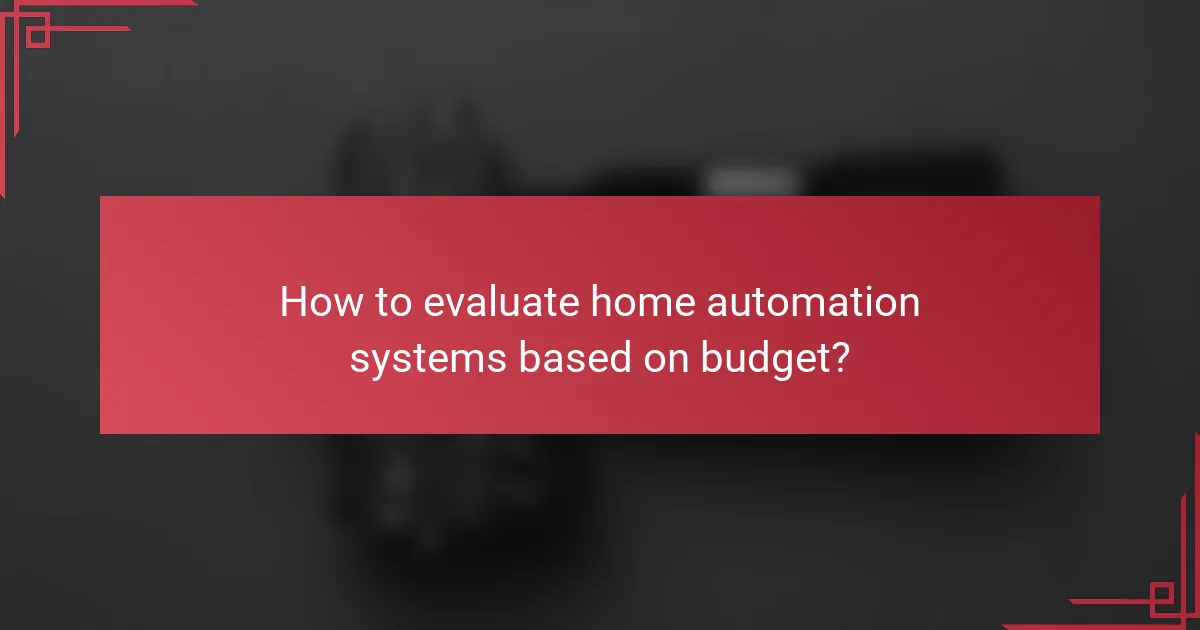
How to evaluate home automation systems based on budget?
Evaluating home automation systems within budget constraints involves identifying essential features, setting a clear budget range, and comparing installation costs. This approach ensures you select a system that meets your needs without overspending.
Identify essential features
Start by determining which features are crucial for your home automation system. Common essentials include smart lighting, security cameras, thermostats, and voice control capabilities. Prioritize these features based on your lifestyle and daily needs.
For example, if security is a top concern, focus on systems that offer robust surveillance options and alerts. Conversely, if energy efficiency is your goal, prioritize smart thermostats and lighting controls.
Set a clear budget range
Establishing a budget range is vital for narrowing down your options. Consider the total costs, including equipment, installation, and ongoing subscription fees. A reasonable starting point for basic systems might be around $200 to $500, while more advanced setups can exceed $1,500.
Be realistic about what you can afford and factor in potential future upgrades. Setting a budget helps prevent overspending and keeps your choices aligned with your financial situation.
Compare installation costs
Installation costs can vary significantly depending on the complexity of the system and whether you choose professional installation or a DIY approach. Professional installation may range from $100 to $500, while DIY options can save money but require time and effort.
Evaluate the trade-offs between convenience and cost. If you opt for DIY, ensure you have the necessary skills and tools to avoid complications. For complex systems, professional help may be worth the investment to ensure proper setup and functionality.
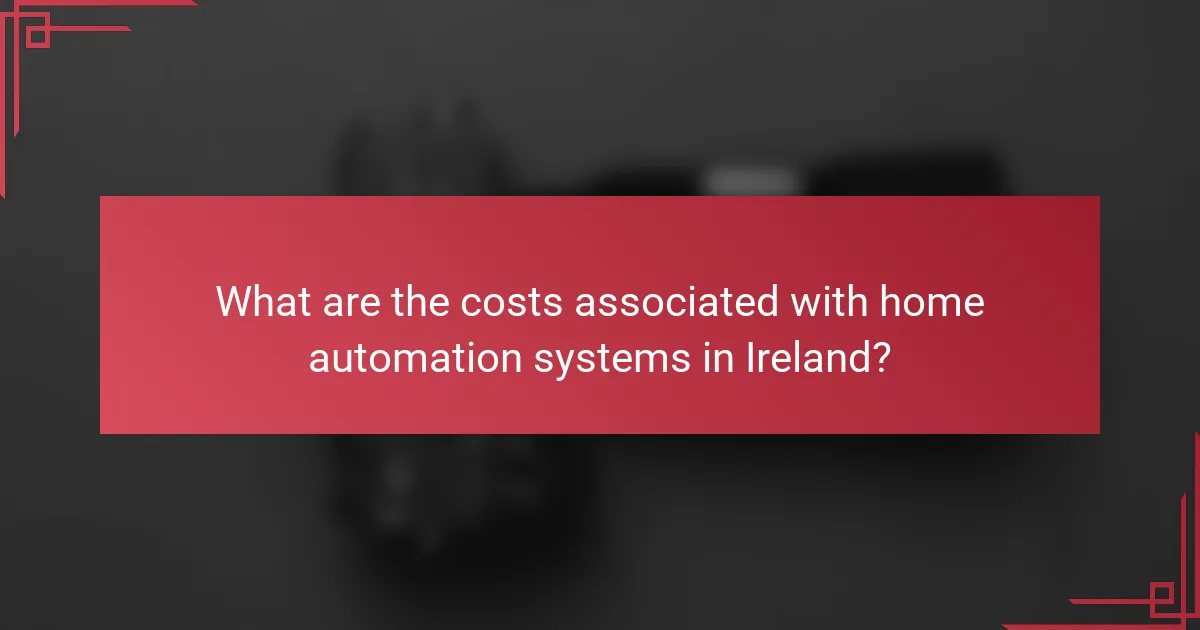
What are the costs associated with home automation systems in Ireland?
Home automation systems in Ireland can vary significantly in cost depending on the complexity and features desired. Generally, you should consider initial purchase costs, installation fees, and potential monthly subscription fees when budgeting for a system.
Initial purchase costs
The initial purchase costs for home automation systems can range from a few hundred to several thousand euros. Basic systems, which may include smart lighting and security cameras, typically start around €200 to €500. More advanced setups, featuring integrated home entertainment and climate control, can exceed €2,000.
When evaluating initial costs, consider the brand and features. Established brands may offer higher quality but at a premium price. Look for systems that allow for scalability, enabling you to add devices over time without a complete overhaul.
Installation fees
Installation fees for home automation systems in Ireland can vary widely based on the complexity of the setup. Simple systems may incur costs of around €100 to €300 for professional installation, while more complex configurations could reach €1,000 or more.
DIY installation is an option for those comfortable with technology, which can save on costs. However, ensure that you understand the system’s requirements to avoid complications that may arise from improper setup.
Monthly subscription fees
Many home automation systems come with optional monthly subscription fees that can range from €5 to €30. These fees often cover cloud storage for security cameras, advanced features, and customer support.
Before committing to a subscription, assess the value of the services offered. Some systems provide essential functionalities without a subscription, while others may require it for full access. Always read the terms to avoid unexpected charges.
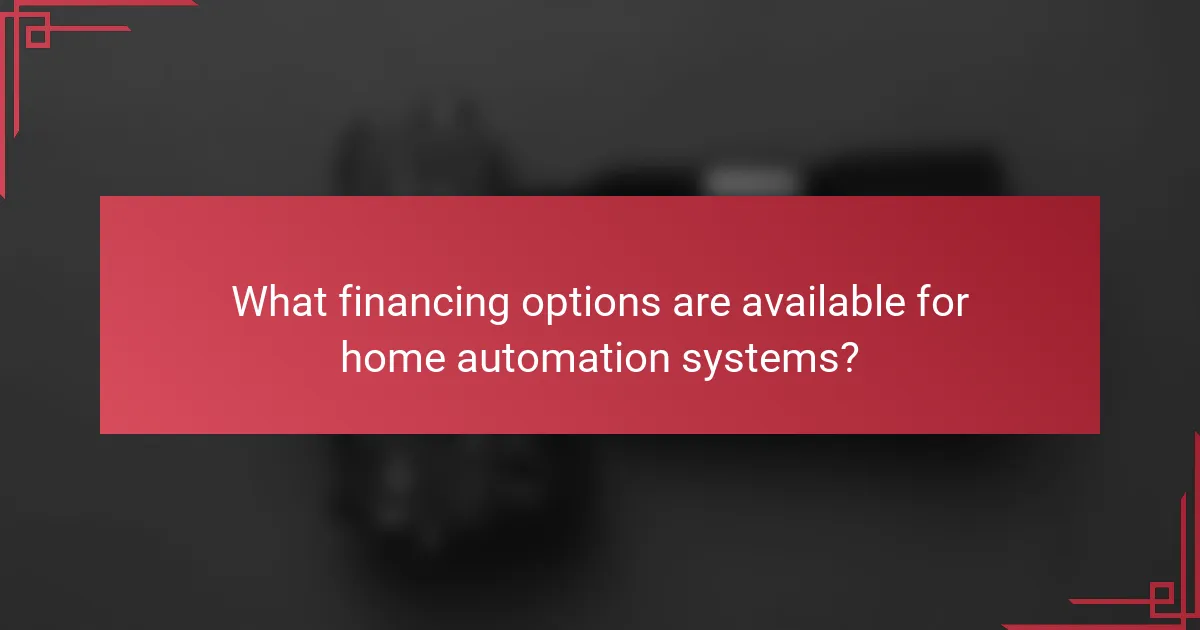
What financing options are available for home automation systems?
Home automation systems can be financed through various options that cater to different budgets. Understanding these financing methods can help you choose the best fit for your financial situation and automation needs.
Pay-as-you-go plans
Pay-as-you-go plans allow homeowners to pay for their home automation systems as they use them. This option is often flexible, enabling you to add or remove devices based on your budget and needs without a long-term commitment.
Consider this option if you want to start small and gradually expand your system. Many providers offer monthly subscriptions that cover equipment and services, typically ranging from $10 to $50 per month.
Installment payment options
Installment payment options let you spread the cost of your home automation system over a set period, usually through fixed monthly payments. This approach can make larger purchases more manageable, as you won’t need to pay the full amount upfront.
When evaluating installment plans, look for terms that suit your budget, such as 12 to 36-month payment periods. Be aware of any interest rates or fees that may apply, as these can increase the total cost.
Credit financing
Credit financing involves using a credit card or a dedicated financing option from the retailer to purchase your home automation system. This method can provide immediate access to funds but may come with higher interest rates if not paid off quickly.
Before choosing credit financing, assess your ability to repay the amount within a promotional period, if available. It’s wise to compare different credit options to find the one with the lowest interest rate, which can significantly affect your overall expenditure.
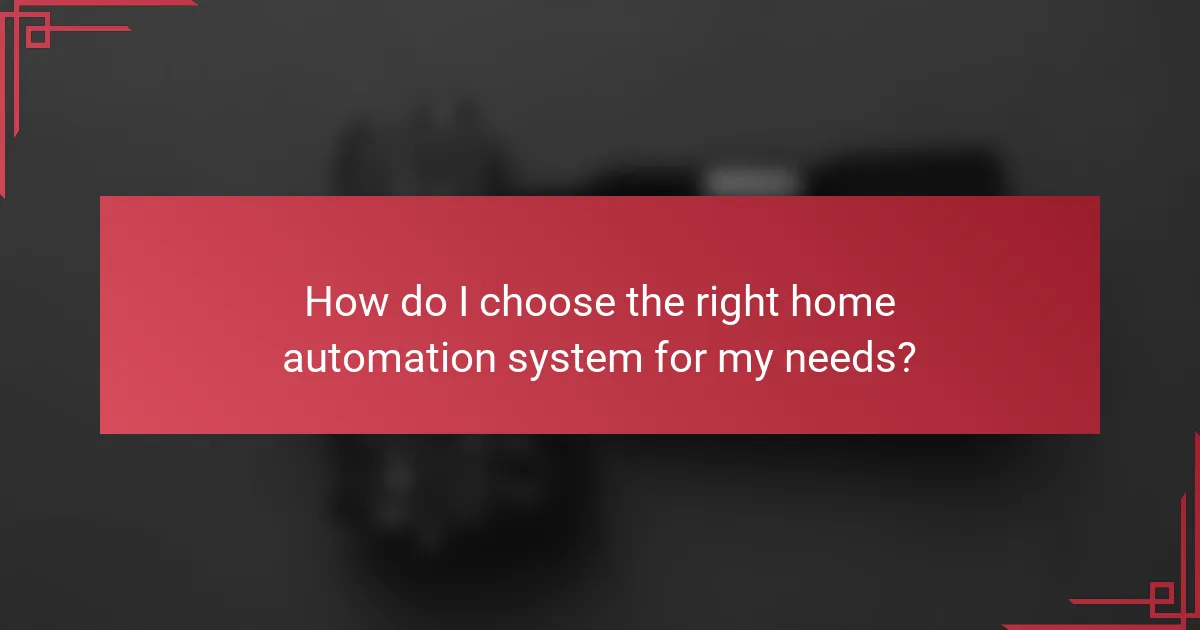
How do I choose the right home automation system for my needs?
Choosing the right home automation system involves assessing your specific requirements, budget, and compatibility with existing devices. Start by identifying the features that are most important to you, such as security, energy management, or convenience, and then evaluate systems that fit within your financial constraints.
Assess compatibility with existing devices
Compatibility is crucial when selecting a home automation system. Ensure that the system you choose can integrate seamlessly with your current devices, such as smart lights, thermostats, and security cameras. Check for compatibility with popular standards like Zigbee or Z-Wave, which many devices use.
Before making a purchase, create a list of your existing devices and verify whether the automation system supports them. This can save you from additional costs associated with replacing incompatible devices.
Evaluate user interface and ease of use
The user interface of a home automation system significantly impacts your experience. Look for systems that offer intuitive controls, whether through a mobile app or a web interface. A well-designed interface can make managing your home automation easier and more enjoyable.
Consider testing the system in-store or through online demos to gauge its usability. Systems that allow for easy customization and provide clear instructions will enhance your overall satisfaction and reduce frustration during setup and daily use.
